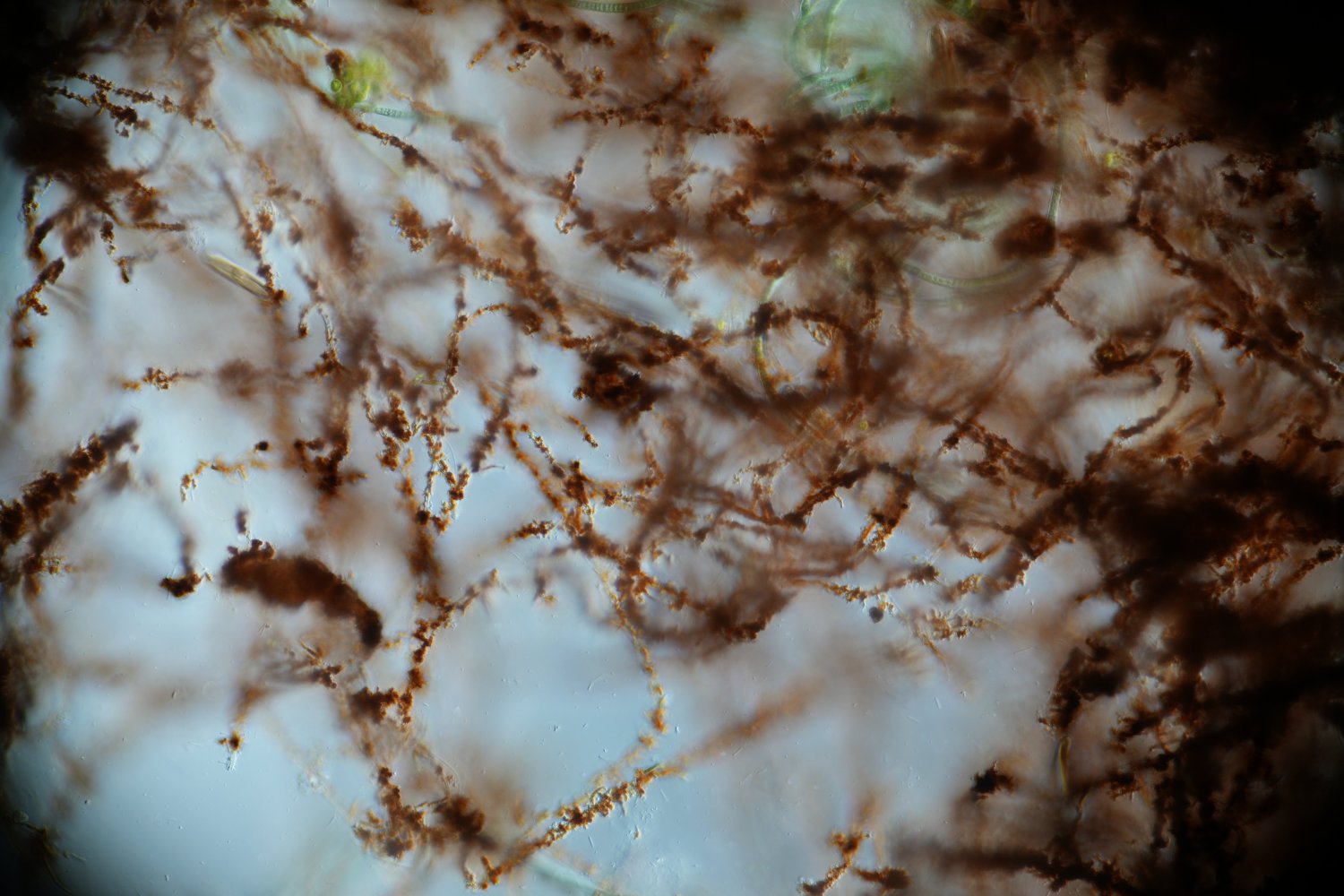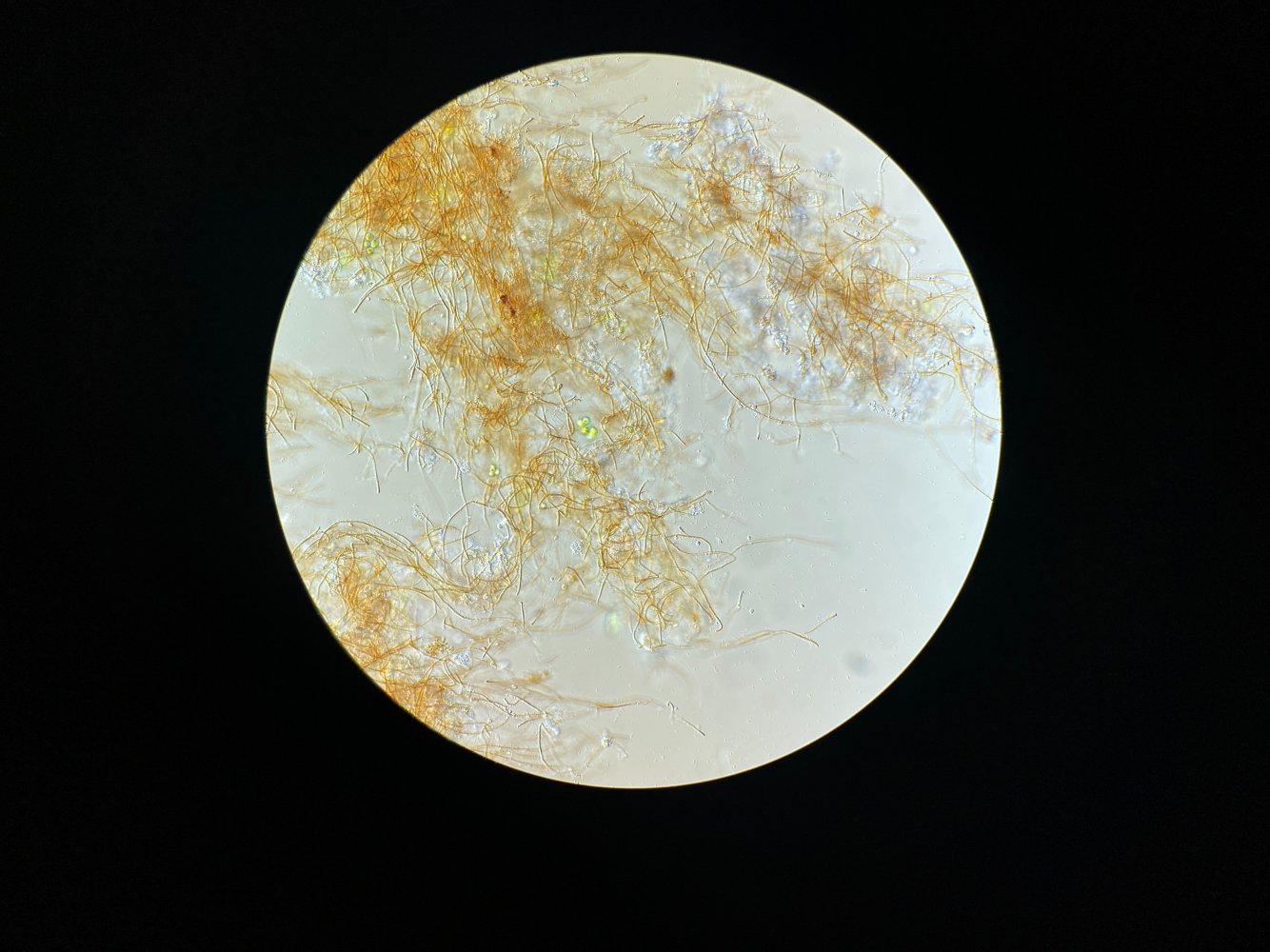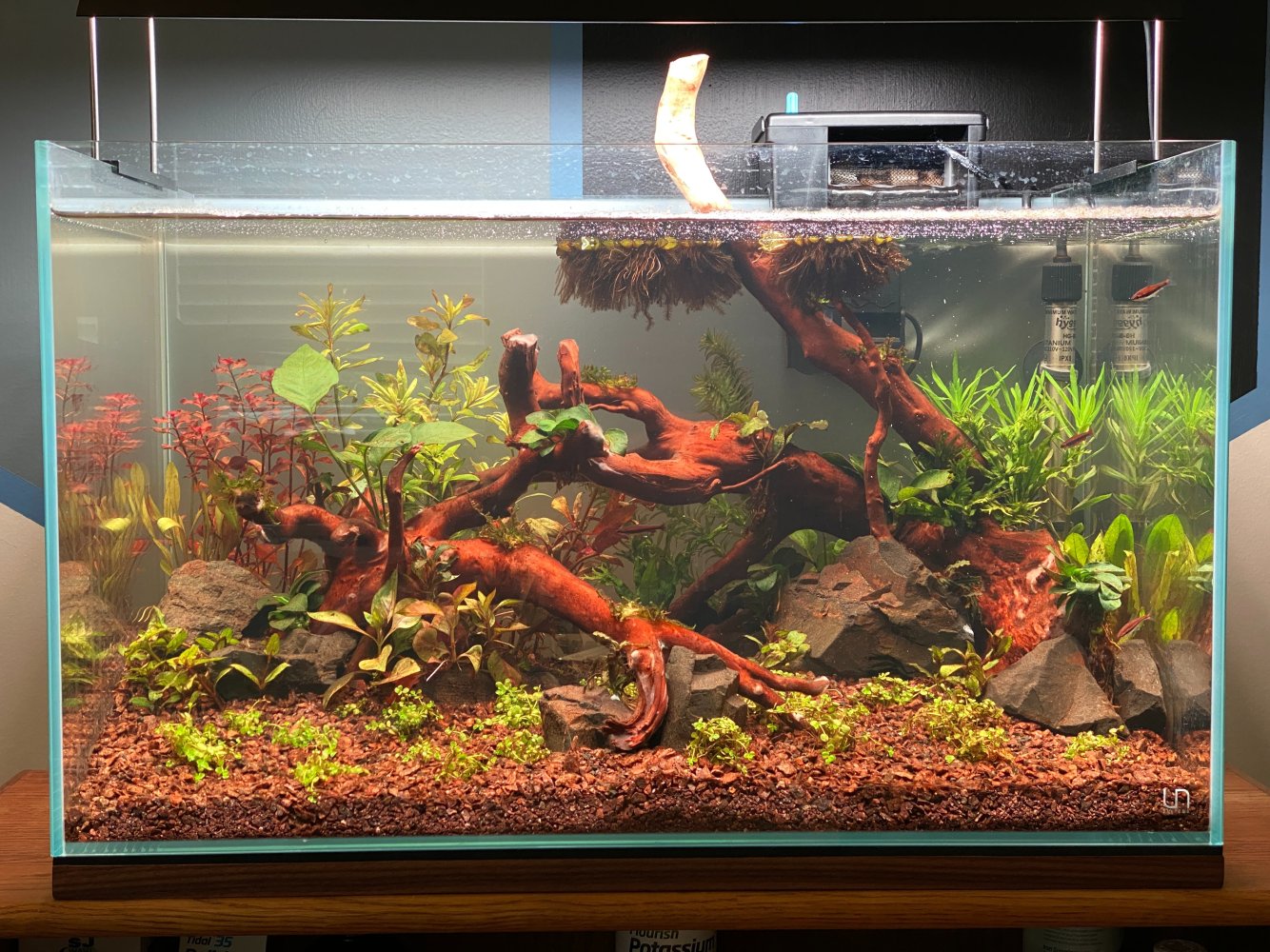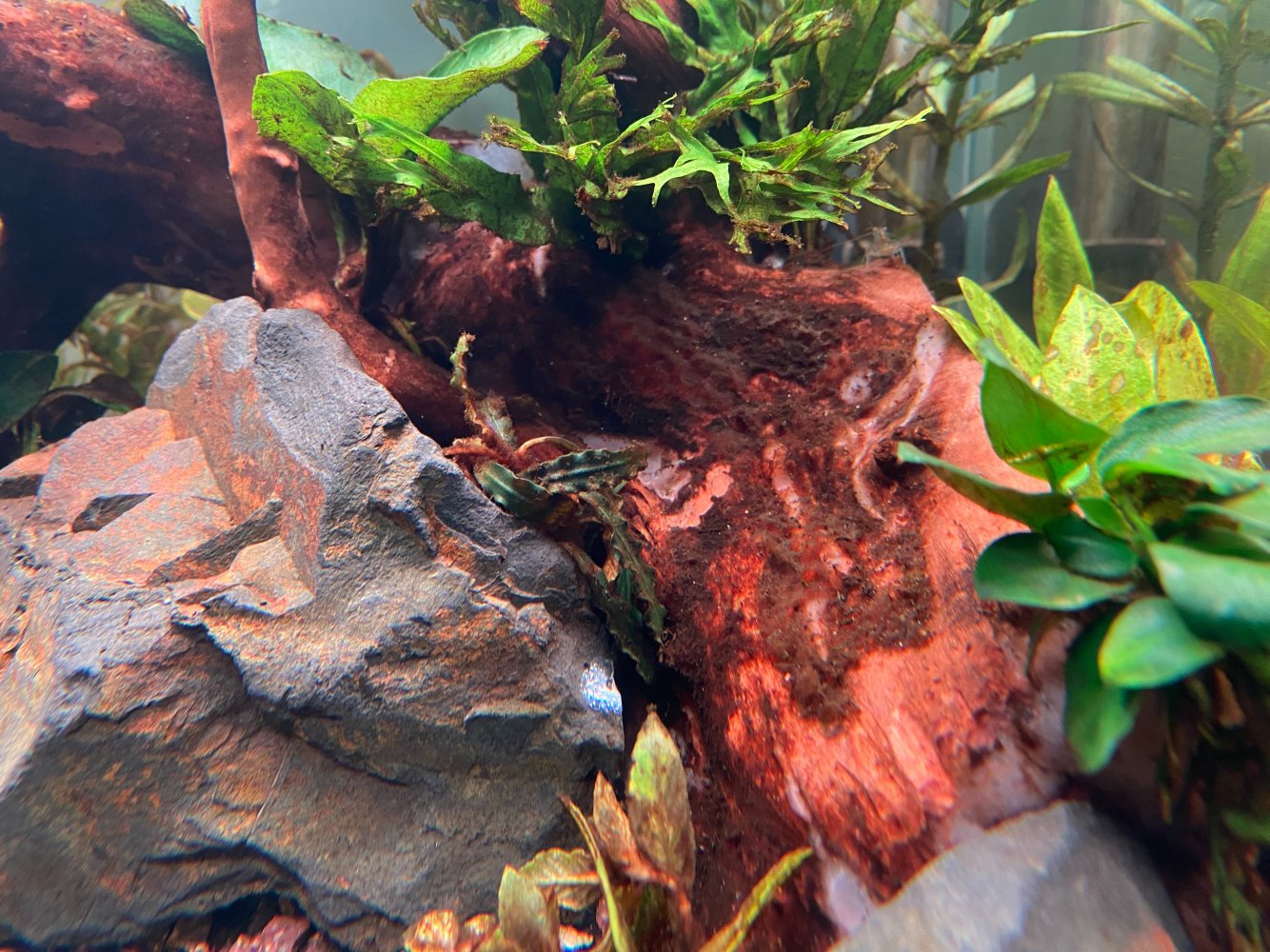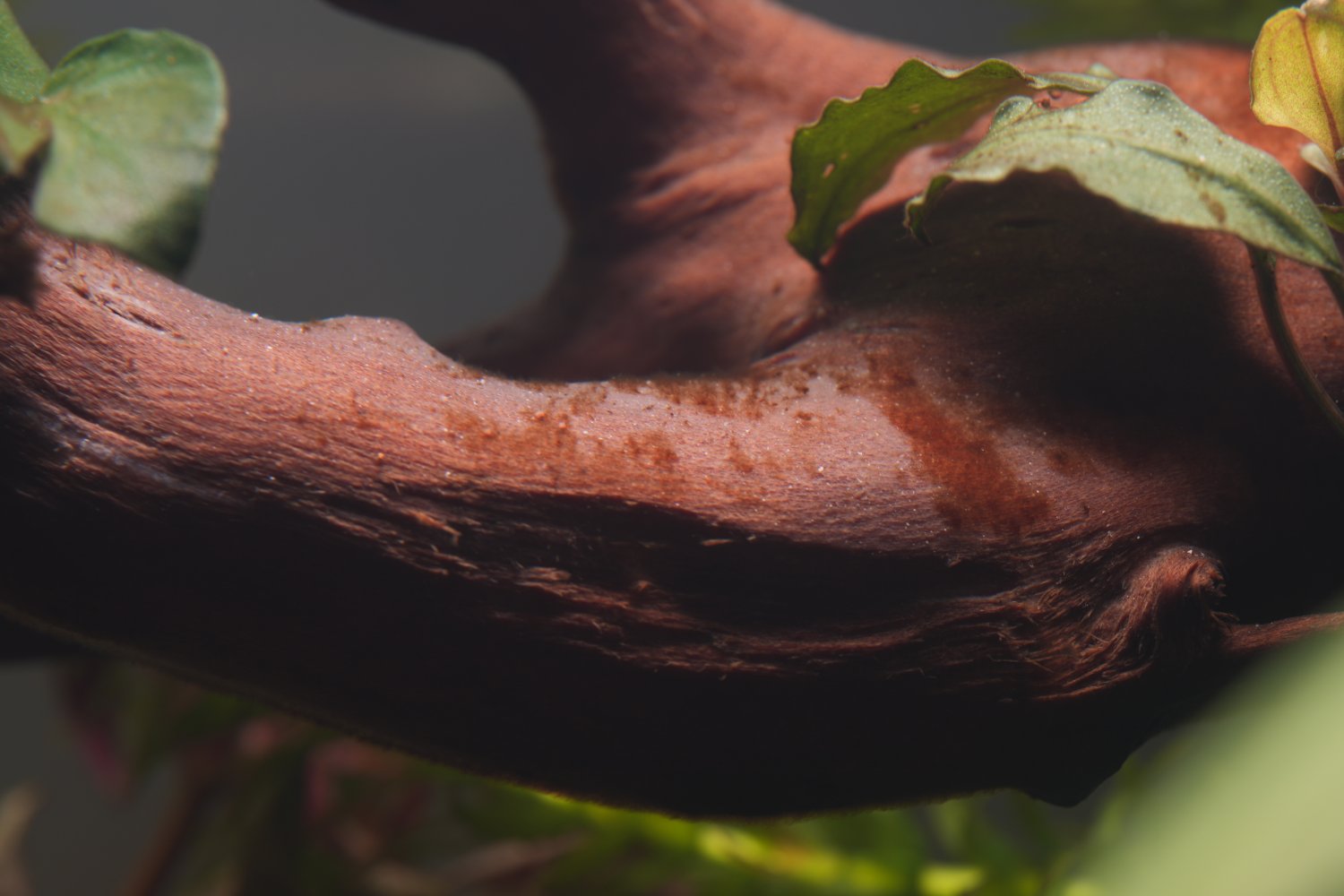alar01
New Member
Hello all!
Before this post kicks off, I just wanted to say I'm not really concerned about the status of my tank... It should sort itself out eventually. I am more curious about the opinions on what this stuff is!
I set up my first planted tank about 4 weeks ago, and it's having a few issues. Mainly, the wood and plants are covered in this fuzzy brown fluff.
To start this whole mess off, I had planned out and set up hardscape, boiled the spiderwood, and glued rocks to them. My critical mistake was gluing a small (un-boiled) piece to the main pieces to fill out some empty space. Then I put the hardscape in the tank with substrate, filled it with water and let it sit for about 6 days to get rid of some tannins and ammonia spike from the aquasoil capped with flourite. The tank had a cardboard surround to stop stray light from my windows.
After I removed the cardboard (3-ish days in), I noticed a brown fluff covering the little stick that didn't get boiled. Then it started spreading rapidly. At day 6 the rest of the wood had a light coating, and the glass too. Then the plants arrived, I drained the tank thinking it might be normal, scrubbed some of it off, and planted everything. After a week the leaves were covered with brown fluff, but it spread most in the dark areas of the tank; Under the logs, bottoms of leaves, coating the inside of the filter. At week 3 I had enough and bough 3 panda garra (LFS recommended, I know technically fish-in cycle but water parameters are stable with 0 ammonia and 0 nitrite), some amano shrimp, and some ramshorn snails. They've started to pick away at it slowly, and it doesn't seem to be coming back post week 4, but it got me curious. After a lot of searching, I never found anything online about people with similar looking algae. Everyone with brown algae said "diatoms" and that was the end of it. But I'm not sure if that's the case for my tank.
I included some pictures of my tank and the images I took through my microscope. There are no chloroplasts/green in it, which is intriguing, and made me consider a type of fungus. The round picture is from when I noticed it originally (still contains brown color inside the "body tube"), and the other microscope image is from today (looks like an empty hull, with brown particles all around). I know there is the typical algae in the tank; some BGA, diatoms, etc., but this seems different.
Has anyone had any any experience with something like this? I'm very curious to hear some thoughts!
(If people are interested, I also have microscope images of the microfauna I've found in the tank.)
Tank specs.
Thanks!
Before this post kicks off, I just wanted to say I'm not really concerned about the status of my tank... It should sort itself out eventually. I am more curious about the opinions on what this stuff is!
I set up my first planted tank about 4 weeks ago, and it's having a few issues. Mainly, the wood and plants are covered in this fuzzy brown fluff.
To start this whole mess off, I had planned out and set up hardscape, boiled the spiderwood, and glued rocks to them. My critical mistake was gluing a small (un-boiled) piece to the main pieces to fill out some empty space. Then I put the hardscape in the tank with substrate, filled it with water and let it sit for about 6 days to get rid of some tannins and ammonia spike from the aquasoil capped with flourite. The tank had a cardboard surround to stop stray light from my windows.
After I removed the cardboard (3-ish days in), I noticed a brown fluff covering the little stick that didn't get boiled. Then it started spreading rapidly. At day 6 the rest of the wood had a light coating, and the glass too. Then the plants arrived, I drained the tank thinking it might be normal, scrubbed some of it off, and planted everything. After a week the leaves were covered with brown fluff, but it spread most in the dark areas of the tank; Under the logs, bottoms of leaves, coating the inside of the filter. At week 3 I had enough and bough 3 panda garra (LFS recommended, I know technically fish-in cycle but water parameters are stable with 0 ammonia and 0 nitrite), some amano shrimp, and some ramshorn snails. They've started to pick away at it slowly, and it doesn't seem to be coming back post week 4, but it got me curious. After a lot of searching, I never found anything online about people with similar looking algae. Everyone with brown algae said "diatoms" and that was the end of it. But I'm not sure if that's the case for my tank.
I included some pictures of my tank and the images I took through my microscope. There are no chloroplasts/green in it, which is intriguing, and made me consider a type of fungus. The round picture is from when I noticed it originally (still contains brown color inside the "body tube"), and the other microscope image is from today (looks like an empty hull, with brown particles all around). I know there is the typical algae in the tank; some BGA, diatoms, etc., but this seems different.
Has anyone had any any experience with something like this? I'm very curious to hear some thoughts!
(If people are interested, I also have microscope images of the microfauna I've found in the tank.)
Tank specs.
- UNS 60U
- Chihiros WRGB II 10th edition @ ~30% brightness, 4 light - 3 siesta - 4 light
- Seachem Tidal 35
- Heated to 22C
Thanks!


